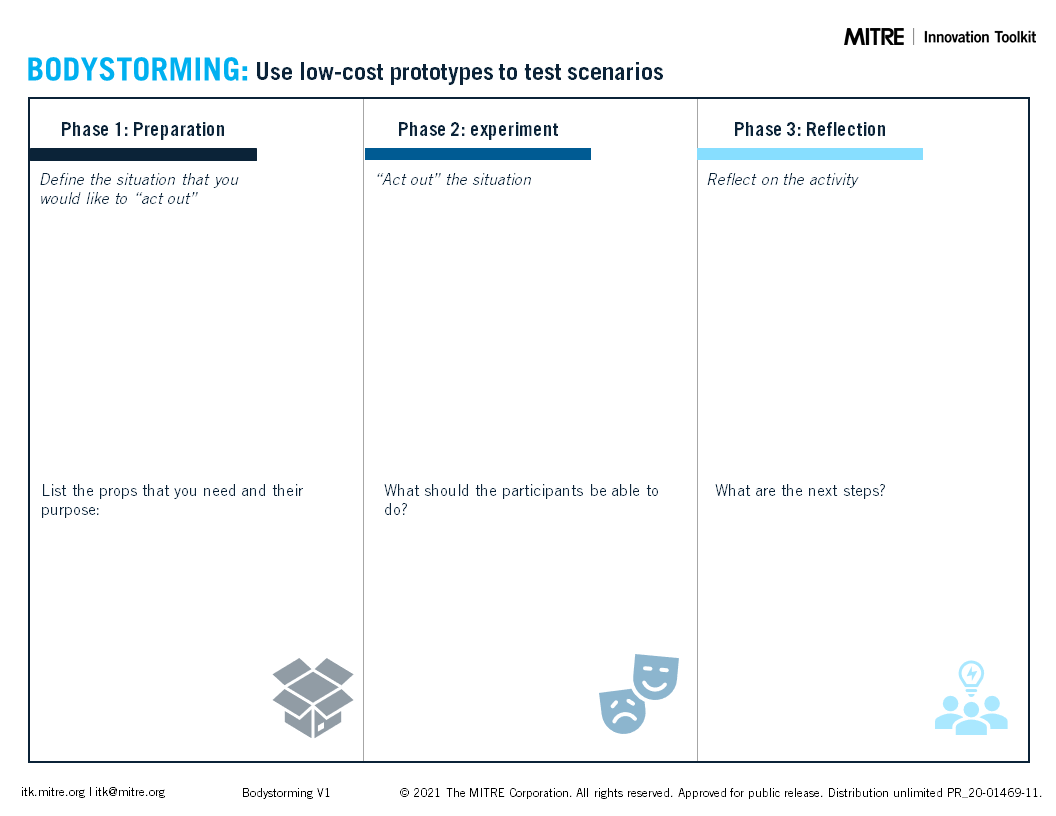Bodystorming |
 |
What is it
In this physical variant on brainstorming, participants use their body and inexpensive materials or objects to role-play and mimic interaction with a system, product, or experience.
When to use it
When the team has a new set of users to consider, a new interface to test, or is working on a physical design to test and demonstrate new ideas.
Why use it
- Explore “risky designs” in cardboard and paper, where the investment and exposure to loss is minimal.
- Develop empathy with end users by walking through all the interactions end users may have with a system.
Level
Intermediate
Outcome
Generate
Group Size
6+ people
Suggested Time
45+ minutes
Bodystorming Worksheet

How to do it
STEP 1
Select a desired topic to investigate, such as navigating an office kitchen, a new software product, or an experience like airplane travel.
STEP 2
Identify a few willing participants and, if desired, audience members to help with the process.
STEP 3
Locate a room or space and some materials to serve as props (e.g., office chairs as airplane seats or books as monitors).
STEP 4
Assign each individual a role – not every role has to be a human (e.g., one person could be a technical component of a system). Make sure everyone knows their role and has some idea of the interactions.
STEP 5
Step through the scenario using props and mimicking each of the touchpoints that users have with a system, product, or experience.
STEP 6
Participants and audience members should discuss what went well, challenges, issues, and opportunities.
Benefits
Allows playful and realistic exploration of physical solutions.
Challenges
Requires access to cardboard boxes & assorted materials to create physical objects.
